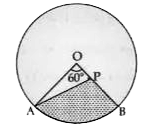Write of the following are Aps? IF they form an AP, find the common difference d and write three more terms.
(i)2,4,8,16......(ii)2,52,3,72...
(iii) −1.2,−3.2,−5.2,−7.2....
(iv)−10,−6,−2,2....
(v) 3,3+√2,3+2√2,3+3√2.... (vi)0.2,0.22,0.222,0.2222...
(vii) 0,−4,−8,−12...
(viii) −12,−12,−12,−12....
(ix)1,3,9,27...
(x) a,2a,3a,4a
(x i) a,a2,a3,a4.....
(xii)√2,√8,√18,√32....
(xiii)√3,√6,√9,√12...
(x iv) 12,32,52,72,...
(xv)=12,52,72,73,....
The correct Answer is:(i)a4−a3 (ii)5
Topper's Solved these Questions
- ARITHMETIC PROGRESSIONSBOOK - OSWAAL PUBLICATIONCHAPTER - ARITHMETIC PROGRESSIONSEXERCISE - TEXTBOOK CORNER EXERCISE 1.2
21 Videos
- ARITHMETIC PROGRESSIONSBOOK - OSWAAL PUBLICATIONCHAPTER - ARITHMETIC PROGRESSIONSEXERCISE - TEXTBOOK CORNER EXERCISE 1.3
20 Videos
- ARITHMETIC PROGRESSIONSBOOK - OSWAAL PUBLICATIONCHAPTER - ARITHMETIC PROGRESSIONSEXERCISE - LONG ANSWER TYPE QUESTIONS-II
13 Videos
- AREAS RELATED TO CIRCLES BOOK - OSWAAL PUBLICATIONCHAPTER - AREAS RELATED TO CIRCLES EXERCISE - LONG ANSWER TYPE QUESTIONS - I
20 Videos
- CIRCLES BOOK - OSWAAL PUBLICATIONCHAPTER - CIRCLES EXERCISE - TEXTBOOK CORNER (EXERCISE 4.2)
13 Videos
Similar Questions
Fill in the blanks in the following , given that a is the first term, d the common difference and an the nth term of the A.P.
View SolutionFind the sum of the following APs :
2,7,12,…to 10th terms.
View SolutionThe sum of four consecutive terms which are in an arithmetic progression is 32 and the ratio of the product of the first and the last term to the product to two middle terms is 7:15. Find the number.
View SolutionIn the given figure, AOB is a sector of angle 60∘ of a circle with centre O and radius 17 cm . If AP ⊥ OB and AP = 15 cm find the area of the shaded region.

View SolutionFrom a point Q ,the length of the tangent to a circle is 24 cm and the distacne to Q from the centre is 24.5 cm.The radius of the circle is
(a) 4.92 cm
(b)12 cm
©15 cm
(d)24.5 cm
View SolutionWhich of the following symbols are not acceptable ? (i) ._(35)^(79)Br (ii) .^(79)Br (iii) ._(79)^(35)Br (iv) ._(35)Br
View SolutionThe value of |[a,a+d,a+2d] , [a+d,a+2d,a+3d] , [a+2d,a+3d,a+4d]|+|[b
View SolutionChoose the chain terminating step
(1) H2→H⋅+H⋅
(2) Br2→Br⋅+Br⋅
(3) Br⋅+HBr→H⋅+Br2
(4) H⋅+Br2→HBr+Br⋅
(5) Br⋅+Br⋅→Br2
View SolutionIn CH_(3)CH_(2)Br,% of Br is
View SolutionPredict all order of reactivity of the following compounds in dehydrohalogenation. a,. I. CH_(3)CH_(2)CH_(2)CH_(2)Cl II. (CH_(3))_(2)CHCH_(2)Cl III. (CH_(3))_(2)CH - CH_(2)Br IV. CH_(3)CH(Br)CH_(2)CH_(3) V. (CH_(3))_(3) C - Br b. I. CH_(3)CH(Br)CH_(3) II. CH_(3)CH_(2)CH_(2)Br III. (CH_(3))_(2) CH - CH_(2) Br IV. (CH_(3))_(3)C - CH_(2) Br
View SolutionThe correct order of size among Br^(+), Br, Br^(-)
View SolutionArrange the following compounds in increasing order of acidity.
(i) CH3CH(Br)CH2COOH
(ii) CH3CH2CH(Br)COOH
(iii) CH3CH2C(Br)2COOH
(iv) CH2BrCH2CH2COOH
View Solutionఏ అవయవాలు కవాటాలు కల్గి ఉంటాయి ?br i) గుండెbr ii) ధమనిbr iii) సిరలుbr iV) శోషరస నాళాలు
View Solution1) Fragmentation () a) Planaria br 2) Unripe fruits () b) Yeast br 3) Desire () c) Spirogyra br 4) Reproduction () d) Watermelon br
View Solutionవేర్ల ద్వారా శాఖీయోత్పత్తి జరిపే మొక్కbr i) డాలియాbr ii) ముల్లంగిbr iii) క్యారెట్br iv) క్యాబేజిbr
View Solution
